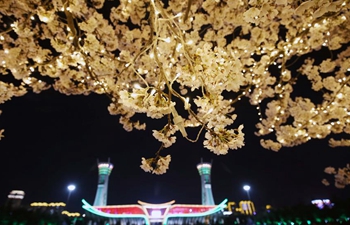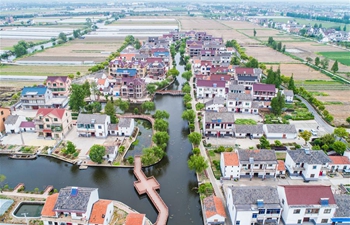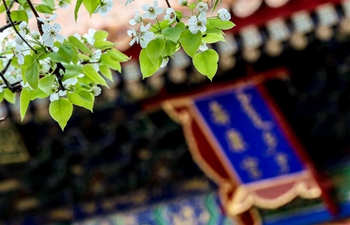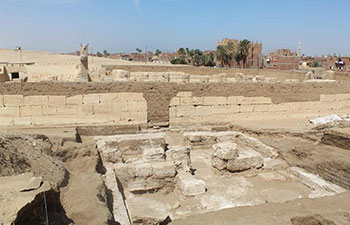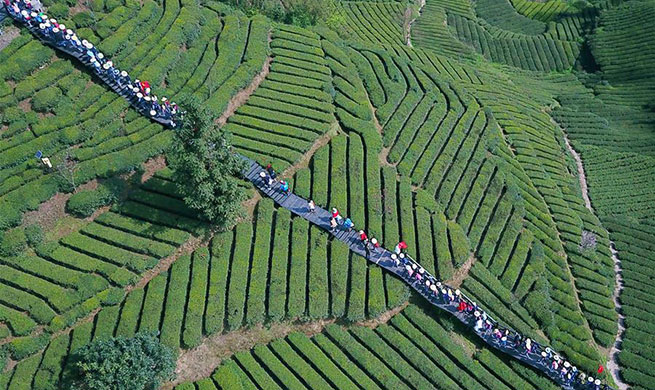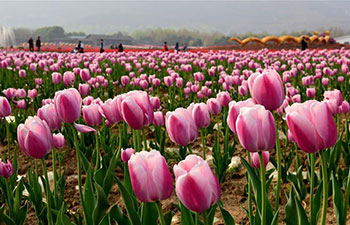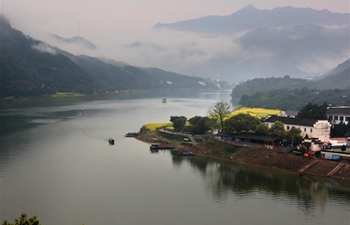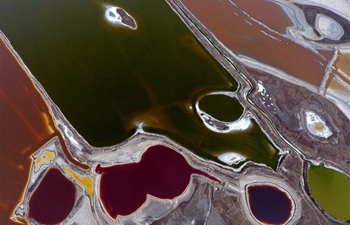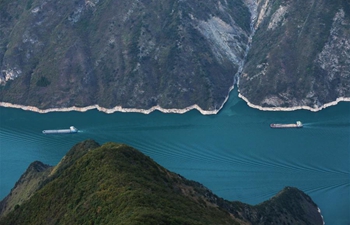HOHHOT, March 30 (Xinhua) -- While farmers are busy preparing for the spring plowing, Liu Chunyan has been visiting villages, giving lessons on drip irrigation.
Liu is an agronomist from a local agricultural technology promotion center in the city of Tongliao, north China's Inner Mongolia Autonomous Region.
"Drip irrigation, which allows water to drip slowly to the plant roots from pipes buried below the surface, would cut the current water volume in half," Liu told farmers in Liaoyang Village.
The village started installing and utilizing a drip irrigation system last year on its 247-hectare crop field, which has saved not only water but also electricity and labor.
The electricity consumed by water pumps has dropped by two thirds to about 100 yuan (15 U.S. dollars) per hectare, and the irrigation workload for four to five people now only needs one person, villagers said.
With more than 900,000 hectares of farmland, Tongliao is a production base for corn, a water-consuming crop.
Last year, 200,000 hectares of crop fields were equipped with drip irrigation systems, with another 267,000 hectares planned this year. The area covered by drip irrigation systems will reach 667,000 hectares by 2020, or more than 70 percent of the city's total farmland area.
The irrigation upgrade in Tongliao is part of Inner Mongolia Autonomous Region's efforts for water conservation in the agricultural sector.
Located mainly in the arid and semi-arid zone, Inner Mongolia only has 1.9 percent of China's total water resources. Farmers rely heavily on groundwater for irrigating crops to maintain high yields.
According to the regional water resources department, the farmland area nourished by groundwater and the number of irrigation pumps surged by more than three times respectively from 1982 to 2016, tripling the groundwater consumption volume for irrigation purposes.
Excessive use of groundwater has led to severe overexploitation in the already dry area.
A national water resources survey found that the exploitable groundwater reserves dropped by 24 percent, while regionally available surface water resources shrank by 16 percent in Inner Mongolia from 2000 to 2016.
To balance the local ecology, the region has been adopting efficient measures for water conservation.
Sun Zhenyun, head of the regional agricultural and animal husbandry bureau, said the region facilitated the use of water-efficient irrigation systems, which will cover 2.72 million hectares of arable land by the end of this year.
China's first policy statement this year, known as "No. 1 central document," said the country would extensively promote agricultural water-conservation projects.
Following the document released last month, the Ministry of Water Resources (MWR) said it would cooperate with other related ministries in developing a plan of installing more efficient water conservation facilities so that the area for water efficient irrigation would reach more than 667 million hectares across the country.
Water conservation in the agricultural sector has become an urgent demand to ensure both water security and food security, said Yan Guanyu, deputy director of the China Irrigation and Drainage Development Center, an MWR-affiliated organization.
"More efforts should be made to turn the traditional resource-consuming farming mode into a greener and more sustainable one for high-quality growth," he said.




